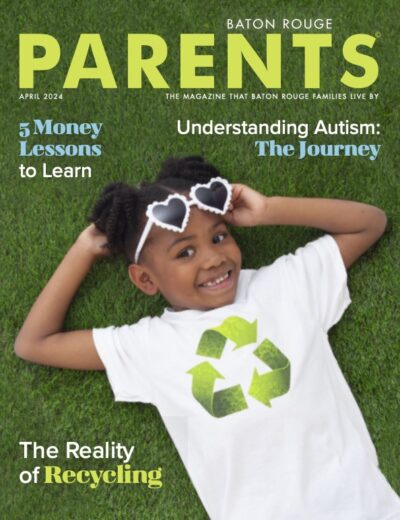
Get Back on Track: Is it Time for Speech Therapy?
“What’s normal for children this age?”
“Will these errors resolve on their own?”
“How do I address this issue?”
Have these thoughts entered your mind after noticing differences in your child’s development while observing other children? Comparing developmental achievements is not the best way to judge your child’s development, as all children develop differently. However, it’s always good to refer to general milestones when your child is struggling with speech and language development.
Slow Down and Follow the Signs
Imagine there were no signs or maps. How would a person know if he is going the correct way or whether danger is ahead? Not paying attention to developmental delays is as risky as not paying attention to road signs. The sooner you identify any problems, the easier it will be to overcome obstacles.
Catching every single moment of your child’s developmental growth is challenging, even if you do not have any other distractions. Determining where your child is in the process is not as difficult when you focus on the basic norms. Jessica Gill, a speech-language pathologist for Livingston Parish Public Schools, suggests looking at the developmental norms to determine if your child is on track based on their age.
According to Natalie Balhoff, a speech-language pathologist from NeuroTherapy Specialists, “In terms of speech intelligibility, a stranger should understand approximately 50 percent of a two-year-old’s speech, 75 percent of a three-year-old’s speech, and 100 percent of a four-year-old’s speech. While a typically developing four year old may not have all their speech sounds and may still exhibit speech sound errors such as saying ‘wed’ instead of ‘red,’ they should be intelligible to an unfamiliar listener.”
Realizing your child is not verbally developing at the expected pace can be very stressful, but it is crucial that you do not live in denial about the situation. There are countless reasons a child’s development may be slower than usual. Although many of them will not affect his or her quality of life in the long term, it is always best to address any potential issues as soon as possible with a professional.
Seeking Guidance and Forming an Impactful Alliance
It is nerve-racking to trust somebody else to take the lead. It is more stressful to let your child fall behind and miss the chance of being confidently independent though. Speech-language pathologists, formally known as speech therapists, guide many families safely through difficult areas of their journey. Gill states, “The public usually thinks of speech therapy for speech sound or stuttering, but we really work on so much more than just that.”
Speech therapists commit to helping children with developmental/cognitive delays, autism, hearing impairments, feeding/swallowing disorders, and articulation problems. They design individualized treatments based on a child’s area of need. Non-verbal children can also benefit from speech therapy because they still need to learn how to communicate, even if it is not with audible words.
Shannon Simpson, a mother of three, put her daughter Cheslyn in speech therapy to improve her ability to swallow and communicate. Cheslyn has Muscular Dystrophy, and she has learned to type letters and phrases to communicate on a speaking device called Tobi Dynovox which connects to her iPad. Simpson states, “Her frustration became my frustration. I could understand her because I would read her lips, but other people could not. It was a life changer to find a great speech therapist who could help with finding the right adaptive equipment for my daughter.”
The Perfect Fit
The first therapist you pick might not be the right fit. The availability for sessions at certain places might be sacred because there is usually a waiting list.
Your child might struggle if there is a gap between sessions. Susan Swanner, mother of three, has struggled to find the right therapist for her daughter, Tracy. Tracy has been in speech therapy since the age of two due to Cerebral Palsy. Swanner says, “The problem is that speech therapists are in short supply and in high demand because they work with children with disabilities and children with speech impediments. Switching therapy locations has affected Tracy’s steady improvement because a gap in her speech therapy sessions occurred.”
Your child always deserves the best, so act right away if your child is not connecting with the therapist. As Swanner states, “The sooner the parent looks for the ‘perfect fit’ and gets the child acclimated to doing speech as a routine, the easier the adjustment becomes for parent and child.” There are many ways to find the perfect one.
According to Gill, parents can search for a clinically certified speech therapist on ASHA’s public portal or through a child search.
“The school system for each parish in Louisiana has a child search team that can evaluate children between the ages of three and five years old to identify an existing disability and need special accommodations.”
You must start getting a referral once you believe you found the right one. Most insurances require a referral to fund the evaluation and sessions. If you go with private pay, it depends on the clinic requirement. There are programs that help with expenses of sessions and equipment as well such as EarlySteps. Children with delays in cognitive, motor, vision, hearing, communication, social-emotional or adaptive development are eligible for EarlySteps.
You should also be cautious about when and where is the best time to start speech therapy. Balhoff says, “Factors such as how early the intervention occurs, the severity of the child’s delay, the intensity of speech therapy, patient motivation, parent support, and carryover of skills learned in therapy influence the length of attending speech therapy.”
Do not waste a minute second guessing what the best way is to get back on track. Get the help your family needs to secure a safe, fun journey. ■
Developmental Norms By Age
Birth-1 years old
Receptive (Hearing and Understanding)
■ Turns and looks toward sounds.
■ Looks when you point and turns when you call her name.
■ Understands words for common items and people.
■ Responds to simple words and phrases, like “No,” “Come here,” & “Want more?”
Expressive (Talking)
■ Babbles long strings of sounds, like mimi, upup, babababa.
■ Uses sounds and gestures to get and keep attention.
■ Uses gestures like waving bye, reaching for “up,” and shaking his head no.
■ Says one or two words, like hi, dog, dada, mama, or uh-oh.
1-2 years old
Receptive (Hearing and Talking)
■ Points to body parts when you ask.
■ Follows one-part directions, like “Roll the ball” or “Kiss the baby.”
■ Responds to simple questions, like “Who’s that?” or “Where’s your shoe?”
■ Listens to simple stories, songs, and rhymes.
■ Points to pictures in a book when you name them.
Expressive (Talking)
■ Uses a lot of new words.
■ Uses p, b, m, h, and w in words.
■ Asks questions, like “What’s that?”
■ Puts two words together, like “more apple,” “no bed,” and “mommy book.”
2-3 years old
Receptive (Hearing and Understanding)
■ Understands opposites.
■ Follows two-part directions, like “Get the spoon and put it on the table.”
■ Understands new words quickly.
Expressive (Talking)
■ Has a word for almost everything.
■ Uses k, g, f, t, d, and n in words and uses words like in, on, and under.
■ Puts three words together to talk about things. May repeat words and sounds.
■ Asks “Why?”
■ People who know your child can understand him.
3-4 years old
Receptive (Hearing and Understanding)
■ Responds when you call him from another room.
■ Understands words for some colors, like red, blue, and green and words for some shapes, like circle and square.
■ Understands words for family, like brother, grandmother, and aunt.
Expressive (Talking)
■ Answers simple who, what, and where questions.
■ Uses pronouns, like I, you, me, we, and they.
■ Uses some plural words, like toys, birds, and buses.
■ Asks when and how questions.
■ Puts four words together. May make some mistakes, like “I goed to school.”
■ Most people understand what your child says.





